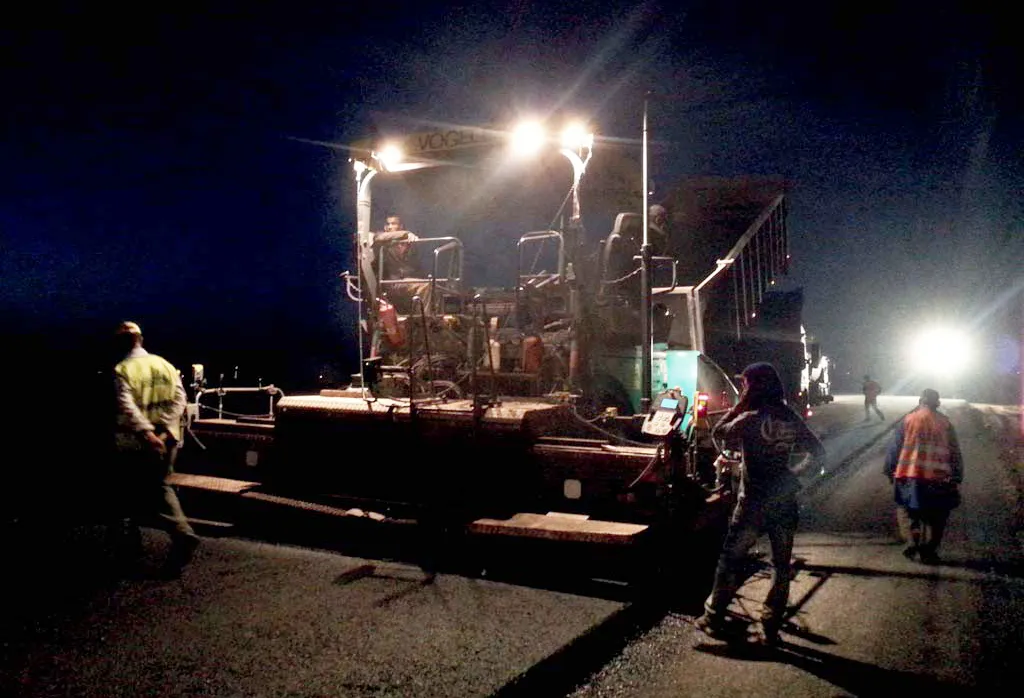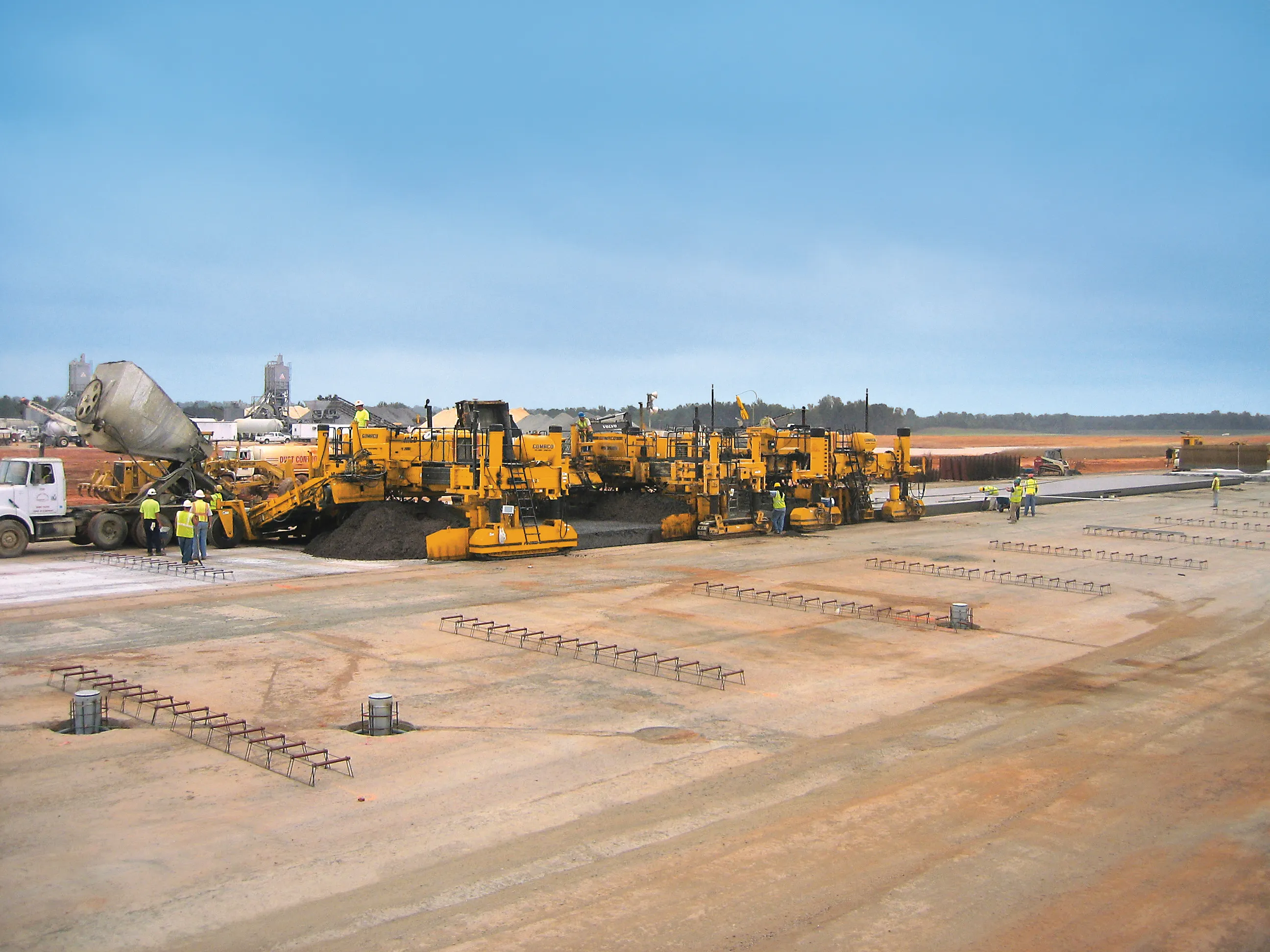SEFIANI Enterprises is staying competitive against rivals firms in the asphalt and paving construction market in Morocco.
Construction Company SEFIANI Enterprises fitted one of its pavers with the Leica PaveSmart 3D machine control system at the end of October 2015. The aim of this was to improve project quality and to reduce operating costs for the 224km project for the LGV Ligne à Grande Vitesse Tanger–Kénitra.
“It is the first system we sold for an asphalt paving application in Morocco,” explained
May 16, 2016
Read time: 4 mins

SEFIANI Enterprises is staying competitive against rivals firms in the asphalt and paving construction market in Morocco.
Construction Company SEFIANI Enterprises fitted one of its pavers with the265 Leica PaveSmart 3D machine control system at the end of October 2015. The aim of this was to improve project quality and to reduce operating costs for the 224km project for the LGV Ligne à Grande Vitesse Tanger–Kénitra.
“It is the first system we sold for an asphalt paving application in Morocco,” explained Slim Meslameni, the North African sales manager for Leica Geosystems. He added that the customer was keen to deliver paving standards that were better than the specifications for the job and stay ahead of the local market.
A paving expert from Leica Geosystems, Mihalis Karizonis, trained the operating asphalt team of SEFIANI Enterprises during the complete week and focused on three important performance factors; quality, quantity and simplicity.
The practical training started with the explanation of the hardware components as well as mounting the tools on the firm’s asphalt paver. In this case, the paver was a1194 Vögele Super 1800-2 which was adapted with the Mobamatic 1 Levelling System. The Leica PaveSmart 3D equipment was quickly connected to the asphalt paver. This fast linking between the Mobamatic and the Leica Geosystems machine control technology is standard for major paver brands including 172 BOMAG, 206 Dynapac, ABG and 1194 Vögele.
Because the system can be changed easily from one type of paver to another, this allows customers to achieve better utilisation within a mixed equipment fleet according to Rainer Bippen, business development manager at Leica Geosystems. He said, “The cost savings are tremendous for construction companies,” and added that project owners benefit for the life-cycle calculation due to the delivery of a higher quality performance with this 3D Machine Control System.
On the second day, the team was ready to pave using the stringless technology. While paving the first metres, the surveying experts from SEFIANI Enterprises made quickly as-build checks, to compare the paving results with the project design. The surveyors measured the overall deviation as being just 3mm, while the requirements of the contract demanded a maximum deviation of 15mm. It was clear that the PaveSmart 3D System system had delivered the improvement in quality the contractor was aiming to achieve.
“The daily performance of 8,000m² Asphalt Road and the improvement of 12mm thickness results in best case costs savings of around €15,000/day. Within a very short time, the investment is easily covered,” said Tarik Elasri sales manager at Leica Geosystems MARCOTEC. In addition, the stake-out and surveying costs for the stringline affect no longer the project. This amounts to a saving of around €1,000/km for the project and on the 32km stretch SEFIANI has been working on, it equates to a saving of an additional €32,000.
Mossaddek Hicham, head of SEFIANI Enterprises has an additional interest in the improved accuracy and cost performance the system delivers. He believes that in coming years, many infrastructure projects with high quality requirements will be put out to tender by Morocco’s Ministry of Infrastructure. These will include high-speed railways, airports, highways and harbour projects. The requirements of these projects will likely be for high accuracy parameters to optimise both performance and working life and to deliver the best value for the government investments.
Now that SEFIANI has experience with machine control technology, the firm believes it will have a stronger chance to win some of these future tenders.
During the training week, Leica Geosystems dealer MARCOTEC supported the PaveSmart Training. The firm has now supplied 11 machines with 3D systems sold in the last few months.
Construction Company SEFIANI Enterprises fitted one of its pavers with the
“It is the first system we sold for an asphalt paving application in Morocco,” explained Slim Meslameni, the North African sales manager for Leica Geosystems. He added that the customer was keen to deliver paving standards that were better than the specifications for the job and stay ahead of the local market.
A paving expert from Leica Geosystems, Mihalis Karizonis, trained the operating asphalt team of SEFIANI Enterprises during the complete week and focused on three important performance factors; quality, quantity and simplicity.
The practical training started with the explanation of the hardware components as well as mounting the tools on the firm’s asphalt paver. In this case, the paver was a
Because the system can be changed easily from one type of paver to another, this allows customers to achieve better utilisation within a mixed equipment fleet according to Rainer Bippen, business development manager at Leica Geosystems. He said, “The cost savings are tremendous for construction companies,” and added that project owners benefit for the life-cycle calculation due to the delivery of a higher quality performance with this 3D Machine Control System.
On the second day, the team was ready to pave using the stringless technology. While paving the first metres, the surveying experts from SEFIANI Enterprises made quickly as-build checks, to compare the paving results with the project design. The surveyors measured the overall deviation as being just 3mm, while the requirements of the contract demanded a maximum deviation of 15mm. It was clear that the PaveSmart 3D System system had delivered the improvement in quality the contractor was aiming to achieve.
“The daily performance of 8,000m² Asphalt Road and the improvement of 12mm thickness results in best case costs savings of around €15,000/day. Within a very short time, the investment is easily covered,” said Tarik Elasri sales manager at Leica Geosystems MARCOTEC. In addition, the stake-out and surveying costs for the stringline affect no longer the project. This amounts to a saving of around €1,000/km for the project and on the 32km stretch SEFIANI has been working on, it equates to a saving of an additional €32,000.
Mossaddek Hicham, head of SEFIANI Enterprises has an additional interest in the improved accuracy and cost performance the system delivers. He believes that in coming years, many infrastructure projects with high quality requirements will be put out to tender by Morocco’s Ministry of Infrastructure. These will include high-speed railways, airports, highways and harbour projects. The requirements of these projects will likely be for high accuracy parameters to optimise both performance and working life and to deliver the best value for the government investments.
Now that SEFIANI has experience with machine control technology, the firm believes it will have a stronger chance to win some of these future tenders.
During the training week, Leica Geosystems dealer MARCOTEC supported the PaveSmart Training. The firm has now supplied 11 machines with 3D systems sold in the last few months.








